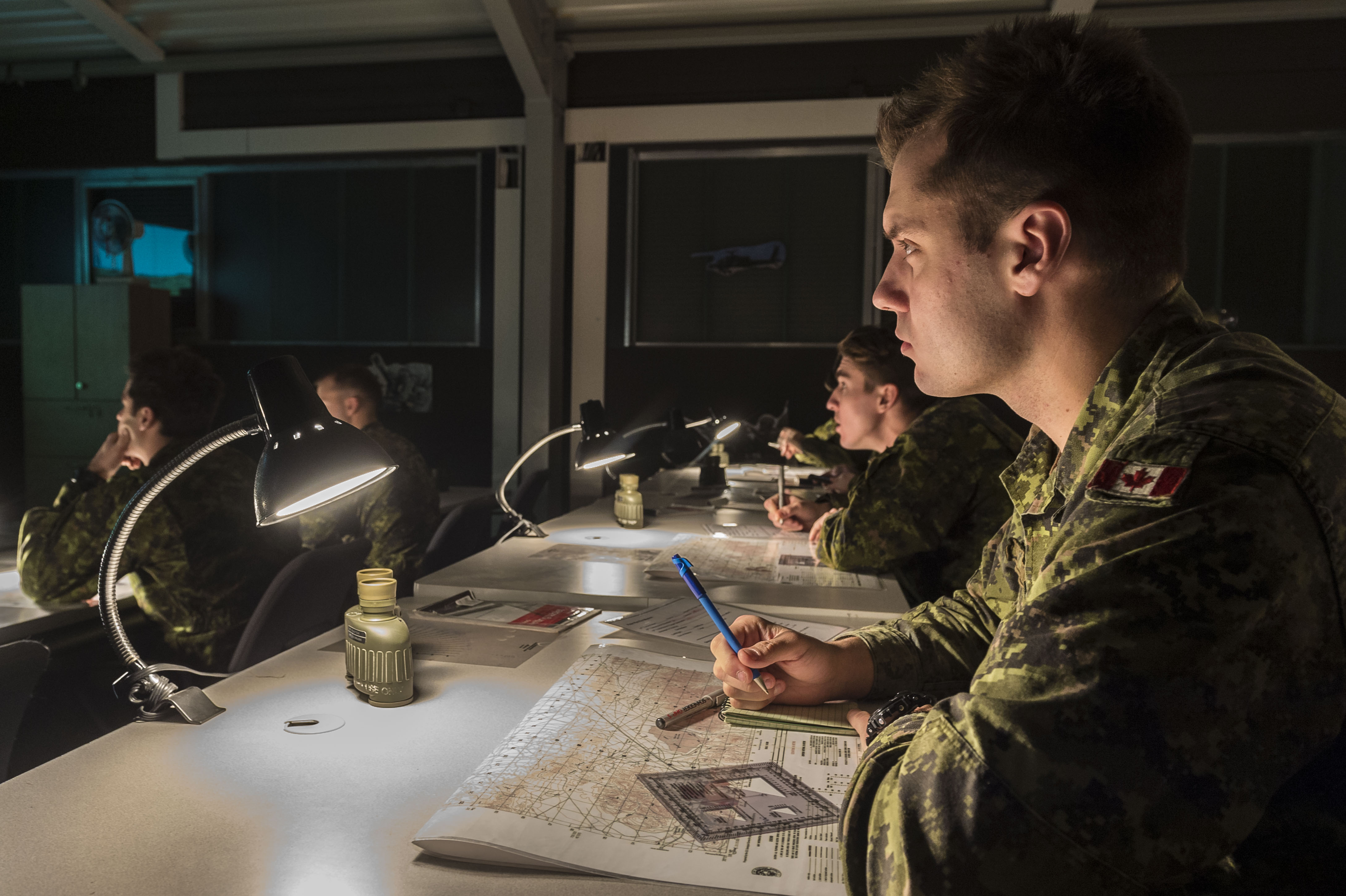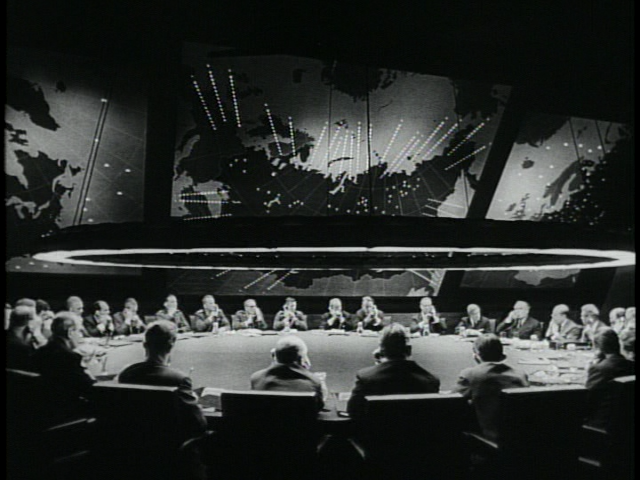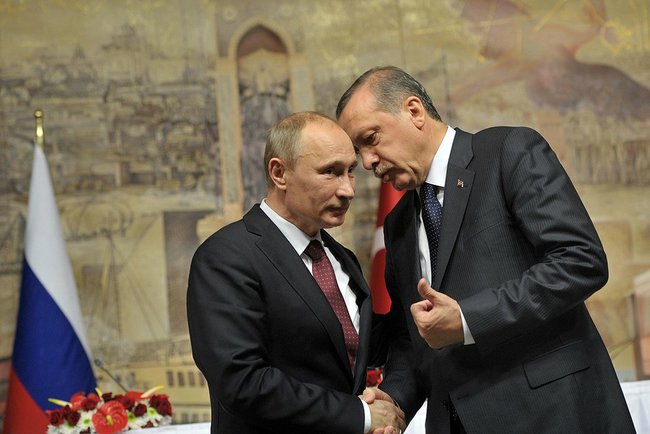Prime Minister Trudeau’s Liberal government currently is undertaking a defence policy review to evaluate the state of Canada’s national security and defence posture. The purpose of the review is to identify the main security challenges, the role of the Canadian Armed Forces (CAF) in responding to threats, and the human and material resources required by the Armed Forces.
On April 11, 2016, Canada’s Minister of National Defence Harjit Sajjan tweeted the question, “what do you think are the main challenges to Canada’s security?” The NATO Association’s program editors and research analysts weigh in.
Ian Goertz: The Biggest Threat to Canadian Security is Canadian Politics
Research Analyst
In response to the question posed by Defence Minister Harjit Sajjan, I think it is most important to look internally at security questions in Canada before exploring outward. Today, the biggest threat to Canadian security is Canadian politics.
Canada has too long ignored the logistical requirements of our armed forces to soundly protect our nation from threats. While Canada exists in a time when there are no overt and direct national threats as have existed in the past, our armed forces are lacking the vital equipment they need to adequately patrol, protect, and react to internal crises. I’m not necessarily speaking of armed conflict or terrorism, but responding to natural disasters or search and rescue operations as well as the ability to the patrol the Arctic.
In addition, Canadian recruitment programs and education in relation to our armed forces is subpar. We as a country need to recognize the vast array of opportunities available to our young people with the armed forces.
Canada does not exist in an era where there are a plethora of imminent and obvious threats to our physical security. However, that does not mean we can allow our armed forces to continue to fall into disarray because politicians refuse to spend money. At the end of the day, we should never be afraid to spend money on keeping Canadians safe.
When thinking on this topic, I often pose a question: If we asked our parliamentarians to drive to work everyday in a 50-year-old car, how fast would those cars be replaced? So then, why is it ever okay to ask our armed forces to go into combat in a 50-year-old helicopter, or into a war zone without bullets?
Michael Kang: Spending Your Way Out of Trouble
Research Analyst
While Canadians may be proud of their enduring record of peace and stability, Canada might just be it own worst enemy when it comes to defence. Without having to resort to military action out of necessity, rather than voluntarily as we do, the perception of defence spending as a ‘want’ opposed to ‘need’ has created a mismatch between the government’s own wants and the needs of the military.
Though the current government has tried to channel the historic notion of Canada being a respected peacekeeping and useful middle power country, Canada’s relevance in international security has long dissipated. Thanks to successive governments putting military spending on the back burner, Canada now provides around only 29 troops to UN peacekeeping missions and spends 1% of GDP on defence. All the while, spending on replacements for the military’s archaic equipment often continues to be miscalculated and delayed, with defence analysts estimating a budget shortfall of CAD $60 billion between current budget allocations for new equipment and that which has been planned to be bought over the next 20 years.
As a result of Canada’s stinginess in its military spending, not only does the military lack the equipment to address growing security concerns such as the defence of the Canadian Arctic, but Canada has lost leverage in terms of its influence within the international community. Key NATO allies such as the US and the UK are becoming increasingly dissatisfied with Canada’s lack of progress in increasing defence spending and Canada’s lack of direct participation in international missions. For instance, ending bombing missions in Syria has led to the government becoming alienated from members of the Combined Joint Task Force. We saw this with the exclusion of Canada from an anti-IS meeting involving significant stakeholders earlier this year. What the government needs to realize is that military spending does not always mean warmongering.
Aleksi Korpela: The Loss of Capabilities is a Loss for Positive Security
Program Editor, Procurement
Security has positive and negative dimensions. Often, when we speak of threats or challenges, we are referring to explicit dangers that could cause loss of life or material damage. These include war, terrorism, long-term climate change, international crime, and cyber attacks on critical infrastructure. But Canada does not face an imminent security threat that immediately threatens Canadian lives. Rather, the present danger is faced by Canada’s capability to influence positive security.
Influencing security in a positive way involves ameliorating the security circumstances of others, but which does not directly relate to a threat to oneself. For instance, Canadian involvement in military operations in Iraq and Syria does not directly relate to protecting Canadians. However, they do make a positive contribution to the security of Iraqi and Syrian civilians, and support the Combined Joint Task Force in operations against ISIL. It is precisely the loss of capabilities that enable positive contributions to international security that are currently under threat.
A poorly structured and managed procurement process, politicization, and insufficient budgetary allocations threaten the Canadian Armed Forces’ capabilities to undertake international operations and reassure global allies. A delayed shipbuilding program has inflated costs and downgraded the Royal Canadian Navy’s blue-water capabilities. Indecisiveness in CF-18 replacement not only risks undermining strategic air capabilities, but also diminishes Canada’s military importance in NATO.
So if Prime Minister Trudeau really seeks to begin “a new era in Canadian international engagement,” Canada should start by ensuring it has the capabilities with which to engage. This requires taking steps to fix Canada’s defence procurement process, rebuilding diminished capabilities, and by committing itself to a positive vision of international activity.
Eric Morse: The Trinity of Canadian Defence
Senior Research Fellow
From Canada’s point of view, almost all ‘challenges to security’ in a military sense are distant and inchoate. The major priority remains the maintenance of the partnership with the Principal Ally in continental defence against off-continent adversaries. The defence of the Arctic may be a subset of this with the caveat that the Principal Ally may have interests in the Arctic that are not necessarily Canada’s. The secondary priority would be preparation for domestic challenges, whether caused by nature or of human origin (i.e. Aid to the Civil Power). The third order would be a contribution to NATO’s effectiveness in Europe, tied for third along with the need to provide capacity for expeditionary forces in wars of choice (since in terms of resources and organization a NATO commitment is per se an expeditionary force, if not a completely balanced one.
Michael Oshell: Uncertainty in Canada’s Arctic
Research Analyst
Canada covers a very large landmass and as such, necessitates a high level of readiness from the Canadian Armed Forces in order to meet all possible breaches and threats. In the north, the Arctic has become, increasingly, the site of nation-to-nation tensions where issues of sovereignty and economic prosperity are of paramount importance.
The lack of persistent and measured infrastructure investment in Canada’s Arctic is troubling, considering the myriad of new and rapidly emerging threats in the region. Efficient infrastructure investment will improve unit-response times and military capabilities where needed. The investment and construction of new deep-water ports, improved road and highway systems, and upgraded airports will dramatically improve the state of infrastructure in Canada’s Arctic.
Finally, the environment. The ecology of this region is particularly fragile and will continue to shift over both the short and long term. It will be increasingly important for leaders at all levels of government to consider the ecological and environmental effects that climate change will bring to the region. Failure to address the possibility of new geopolitical realities as a result of climate change would be an abject failure of any future defence and security policy.
Aishwarya Sahai: Look to the Arctic
Research Analyst
An issue that is quite prevalent but often not mentioned in Canadian defense is the Arctic. What is often forgotten is that, with the onset of environmental problems, the melting of ice leads to questions of sovereignty and environmental protection in the north. With little defense and security capabilities concentrated in the north, the risks of illegal migration, trafficking, drug smuggling, and the movement of illegal weapons are elevated. Canada must consider its Arctic sovereignty and the various resources in the north that can lead to territorial contestation with neighbouring states.
Another issue of contention in the Arctic is the unauthorized access of the Northwest Passage, which Canada considers its domestic waters. Canada also has land and border issues with Denmark and the United States. On an environmental front, the Arctic ecology is also very fragile and its resources, land, and water use must be enforced with care and protected for national interests. As fast as ice recedes, Arctic politics will continue to change. Valuable maritime shipping routes, fish stocks, and abundant natural resources have geopolitical implications that must be taken into consideration.
Adlan Taramov: Canada’s Challenge in the 21st Century
Program Editor, International Business and Economy
Clearly, Canada faces security challenges such as espionage, cyber attacks, Russian encroachments in the Arctic, and a low-intensity terror threat. However, if we look beyond immediate short-term threats, we will see long-term challenges. These include a shifting balance of power due to Chinese and Russian militarization and modernization, threats to international trade routes, challenges related to successful procurement, the modernization of the Canadian Armed Force, breaches in the nuclear non-proliferation regime, and finally, climate change and pandemic diseases.
All these challenges will require that our leadership and society have a clear vision and understanding of Canadian and international security.
Photo courtesy of Corporal Nathan Moulton (Land Task Force Imagery).




